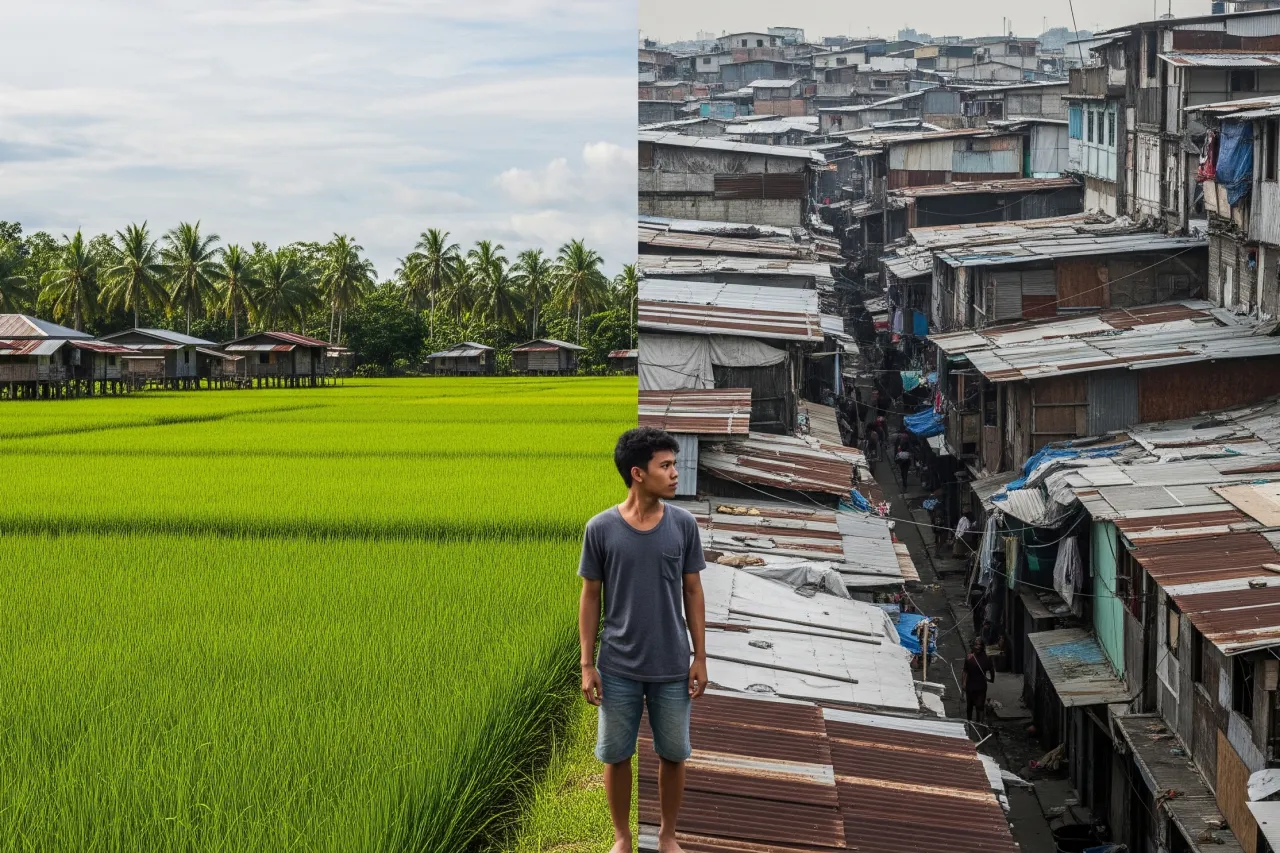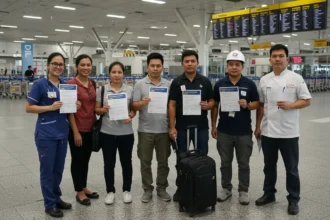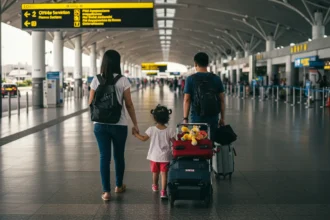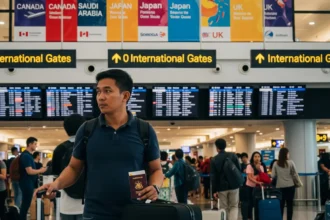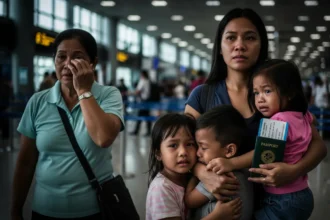Every Filipino has that one “balikbayan” story – except this time, it’s not from abroad. It’s from probinsya to the city… and sometimes, back again.
- 🏙️ The City Dream: Why Filipinos Leave the Province for Urban Life
- 🌾 The Balik-Probinsya Shift: When Success Starts to Look Different
- 💻 Remote Work and Digital Freedom: How Technology Changed the Filipino Dream
- 💰 The Cost of Dreams: City Hustle vs. Provincial Peace
- 🚶 The New Filipino Reality: Redefining Success and Coming Home
- 💬 FAQs About Rural to Urban Migration and the Filipino Reality
- 💙 Finding Home, Wherever You Are
- 🧭 References
For decades, moving to Manila (or any big city) was the ultimate dream. Bigger paychecks, brighter lights, better life – or so we thought. But behind the traffic, the noise, and the endless rent payments, something changed. The city that once symbolized success slowly started to feel… exhausting.
And now, the tide is turning. More and more Filipinos are leaving their condo lives for the calm of the countryside – balik-probinsya not just out of necessity, but out of choice. Remote jobs, online businesses, and that craving for peace have made it possible.
This is the real Filipino journey – not just about chasing success, but redefining it. It’s about finding balance between hustle and healing, between city energy and rural serenity.
So whether you’re a dreamer still chasing that Makati skyline or someone thinking of going home to simpler days, this story’s for you. Because the truth is – every Filipino’s career journey tells a story about who we are, what we value, and where we truly belong.
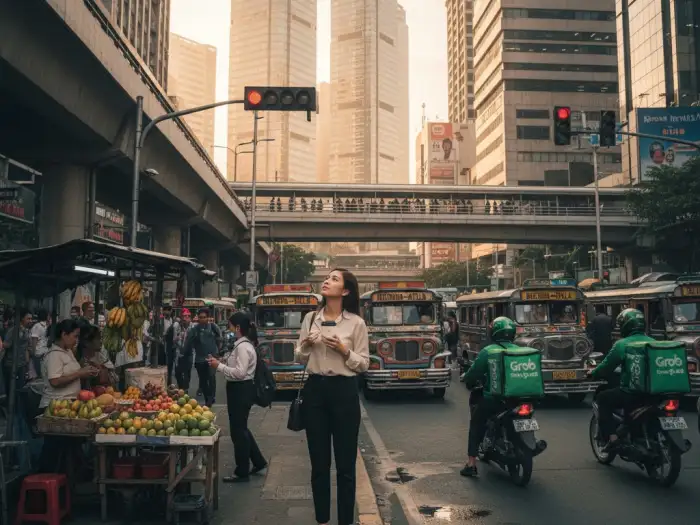
🏙️ The City Dream: Why Filipinos Leave the Province for Urban Life
“Punta ako ng Maynila.”
Those four words have powered generations of dreams. For many, it’s the first step to a new life – away from rice fields, small-town routines, and curfews set by the barangay. The city means freedom, opportunity, konting yabang, and maybe, a shot at success.
It’s easy to see why. In Metro Manila alone, thousands of companies hire every week. There are malls everywhere, cafes with Wi-Fi, offices with aircon (charot), and the kind of career paths you’d never find in the province. For some, that’s enough reason to pack up, ride a bus, and never look back.
But the city dream isn’t just about work – it’s about belonging. Young Filipinos move to cities hoping to prove something – to their families, to their barkada, or to themselves. That they can “make it.” That they can survive traffic, rent, and 9-to-6 life while sending money home.
And for a while, it works. There’s thrill in the chaos – the rush of the MRT, the late-night tapsilogan runs, the feeling of being part of something bigger. It’s the kind of energy that pushes you to hustle harder, dream bigger, and imagine more.
But here’s the twist: after years in the city, that same energy can start to wear you down. The same lights that once inspired you… start to hurt your eyes. The noise that once meant “life” starts to mean stress.
And that’s where the story shifts – from urban chasing to rural yearning.
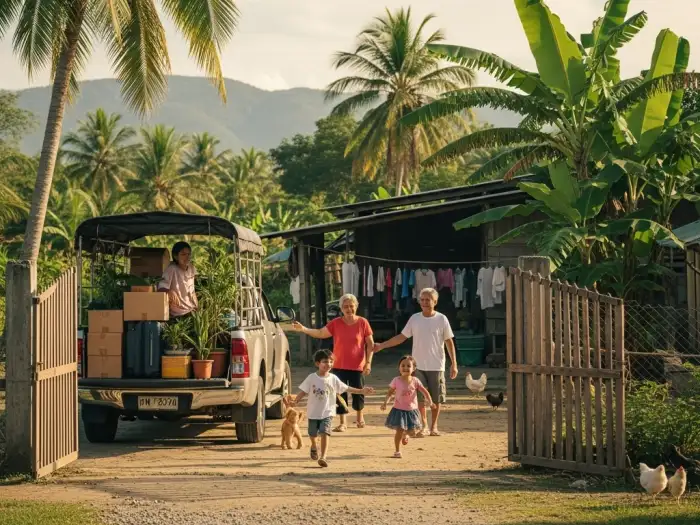
🌾 The Balik-Probinsya Shift: When Success Starts to Look Different
Funny how life works, ‘no? We spend years trying to “escape” the province… only to end up missing it. The air, the quiet, the space to breathe – things we didn’t value before suddenly feel priceless.
After years of chasing promotions, deadlines, and traffic lights, a lot of Filipinos are starting to ask: Is this really the life I wanted?
That’s when the balik-probinsya shift begins. It’s not failure – it’s realization. For some, it’s triggered by burnout. For others, by remote work opportunities. And for many, it’s simply wanting their kids to grow up seeing trees instead of billboards.
In places like Bukidnon, Bohol, or La Union, you’ll find former city professionals who traded heels for tsinelas and daily commute for backyard gardens. Some started online businesses, some freelance full-time, others manage small farms or homestays. And the best part? They’re happier.
Because success isn’t about skyscrapers anymore – it’s about space. Space to rest. To grow. To live.
This new definition of “making it” isn’t about escaping poverty anymore – it’s about escaping chaos. It’s about finding joy where Wi-Fi meets peace and where productivity no longer means exhaustion.
And you know what’s ironic? The moment you stop running after the city dream… that’s when life starts to feel rich again.

💻 Remote Work and Digital Freedom: How Technology Changed the Filipino Dream
Let’s be real – ten years ago, balik-probinsya sounded impossible. “Eh paano ang work dun?” “Walang kuryente pag brownout.” “Walang fast internet.”
But now? One stable Wi-Fi and a decent laptop can literally change your zip code – and your life.
The rise of remote work and online income opened a new chapter in the Filipino career story. You don’t have to live in a condo in Makati to earn big. You can write code from Cebu, edit videos from Bohol, or manage clients from Bukidnon – all while sipping kapeng barako on your veranda.
Technology turned location into a choice, not a limitation. Freelancers, digital nomads, and even corporate remote employees are proving that the “city life” isn’t the only path to success anymore.
It’s not just about convenience; it’s about freedom. The freedom to choose where to wake up, what view to see, and how to spend your time. The freedom to work with purpose – not just for payroll.
And honestly, it’s empowering. For once, Filipino reality isn’t about adjusting to the system – it’s about creating our own.
Remote work gave us the best of both worlds: the hustle of the city and the peace of the province. It’s the new kind of success – one measured not by status or salary, but by satisfaction.
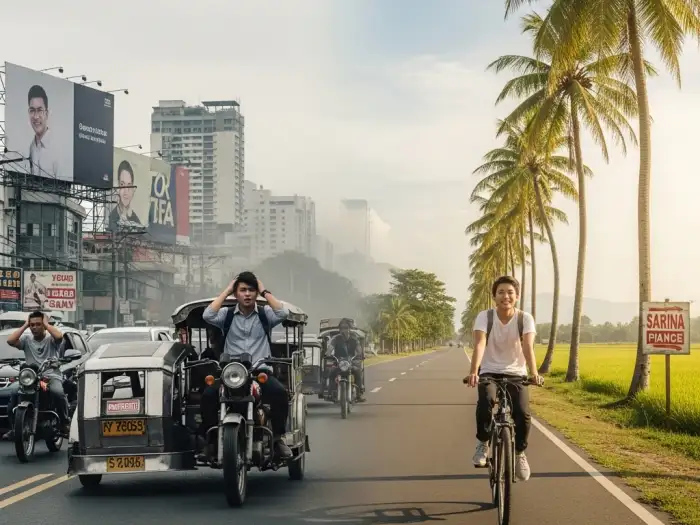
💰 The Cost of Dreams: City Hustle vs. Provincial Peace
Let’s be honest – city life looks rich, but it’s also expensive AF.
You earn ₱50,000 a month and still wonder where it went. Half goes to rent, a quarter to food delivery (hello, GrabFood), and the rest disappears on utilities, coffee, and “treat yourself” moments that are really just coping mechanisms. 😅
Meanwhile, life in the province? Slower, yes – but lighter. Your ₱20,000 can stretch further. You eat fresh food, breathe clean air, and maybe even own the house you live in. There’s no 2-hour commute, no overpriced lattes, no constant race to prove something.
But here’s the thing – both worlds have their cost.
- In the city, you pay in stress.
- In the province, you pay in distance – fewer job options, fewer malls, slower systems.
The balance? That’s the real dream. Many modern Filipinos are now doing hybrid setups – working remotely for city-based companies while living in provincial calm. It’s not perfect, but it’s progress.
Because maybe the goal isn’t to choose between city and province anymore. Maybe it’s to create a life that blends both – urban ambition with rural peace.
And when you think about it, that’s such a Filipino thing to do – to adapt, to adjust, to make it work kahit saan.
We’ve always been dreamers. But now, we’re smarter dreamers.

🚶 The New Filipino Reality: Redefining Success and Coming Home
There was a time when “success” meant leaving home. The farther you went – the more “achieved” you looked. But things are different now.
More Filipinos are realizing that success isn’t just about where you are, but how you live. Some chase titles in the city; others chase sunsets in the province. And both are valid. Both are beautiful.
Our parents’ generation worked to survive. Our generation? We work to feel alive.
For some, that means staying in the city – climbing the ladder, chasing passion, building empires. For others, it means slowing down, planting roots, and finally hearing silence after years of honking jeepneys.
The truth is – the “Filipino dream” is evolving. It’s not just about owning a condo or working abroad anymore. It’s about choosing a life that feels right. A life where you’re not always tired, where you can eat breakfast with family, where you can breathe without rushing.
And maybe that’s what this new rural-to-urban migration reality is all about. Not just movement, but meaning. Not just survival, but choice.
We’re no longer running away from something – we’re running toward a life we finally deserve. 🌿
💬 FAQs About Rural to Urban Migration and the Filipino Reality
1. Why do many Filipinos move from rural areas to cities?
Most Filipinos move to cities like Manila, Cebu, or Davao to look for better jobs and educational opportunities. The provinces can feel limited – fewer companies, smaller salaries, and slower growth. For families, urban life means hope for a brighter future. But it also comes with challenges like high rent, traffic, and homesickness. Still, for many, the dream feels worth chasing… at least at first.
2. What are the main struggles of living in the city as a probinsyano?
Adjustment, talaga. City life moves fast – long commutes, expensive food, and endless competition. It’s a daily grind that can drain your energy and wallet. Many new migrants also struggle with isolation, far from family and the quiet life they’re used to. Over time, it teaches resilience – but also makes you question if “making it” is really worth the stress.
3. Why are more people returning to the provinces today?
Because peace has become the new luxury. After the pandemic, remote work made it easier to live anywhere – so people started choosing quality of life over convenience. The cost of living in the city keeps rising, while provinces offer fresh air, space, and community. For many, going home isn’t giving up – it’s coming back to life.
4. How has technology changed rural-to-urban migration in the Philippines?
Massively. With reliable internet and remote jobs, Filipinos no longer need to move to cities just to earn. Technology connected rural areas to global opportunities – from freelancing to online businesses. Even small towns now have co-working spaces and e-commerce hubs. The dream shifted: it’s not about “escaping” anymore, but choosing where to thrive.
5. What are the pros and cons of living in the city vs. the province?
City life offers bigger salaries, better infrastructure, and more excitement – but it comes with traffic, stress, and high costs. The province, on the other hand, offers calm, cleaner air, and family closeness, though job options are fewer. It really depends on your priorities and season in life. Some prefer the hustle; others, the healing. Balance is the new goal.
6. Is the balik-probinsya trend just a pandemic phase?
No, it’s becoming a permanent lifestyle shift. The pandemic just made people realize how fragile city living can be. Remote work proved that productivity isn’t tied to a location. And after years of burnout, more Filipinos crave slower, simpler, more meaningful lives. The “province life” isn’t a downgrade anymore – it’s an upgrade for the soul.
7. Can you still grow your career while living in the province?
Absolutely – especially today. Many companies now support hybrid or fully remote setups. Plus, digital careers like content creation, virtual assistance, and tech jobs allow growth without relocating. The key is upskilling and maintaining good connectivity. The internet became the new highway to success, wherever you are.
8. What challenges remain for Filipinos living outside big cities?
Connectivity and access to opportunities are still the biggest issues. Some areas lack reliable internet or career diversity. There’s also the social gap – people sometimes think “success” only happens in cities. But with every freelancer, entrepreneur, and returnee thriving from the province, that mindset is slowly changing.
9. How do families adjust when moving back to rural areas?
At first, it feels strange – slower pace, fewer malls, smaller social circles. But soon, families find deeper peace and connection. Kids spend more time outdoors, expenses drop, and everyone gets more breathing room. It’s a trade-off, but one that many say is worth it. The adjustment phase turns into appreciation pretty quickly.
10. What does “success” mean for the modern Filipino today?
Success isn’t just about titles or salaries anymore. It’s about having time for family, freedom to choose your lifestyle, and peace of mind at the end of the day. It’s the balance between hustle and happiness. Whether you’re in a city condo or a mountain town, success now means living life on your own terms.
💙 Finding Home, Wherever You Are
At the end of it all, maybe “home” isn’t about where we came from or where we moved to – it’s where we finally find peace. The rural-to-urban migration story is really the story of the Filipino spirit: brave, adaptable, hopeful. We chase dreams in the city, but our hearts never forget the sound of the rooster in the morning or the smell of rain on the rice fields.
And maybe that’s okay. Maybe we were never meant to choose between the city and the province – maybe we’re meant to move between them, learning what truly matters each time. Because whether we’re in Makati or Mindanao, Cebu or Cavite, success will always look the same – a simple life, lived with meaning.
No matter where you are right now, remember: you didn’t leave home behind – you’re just finding a new version of it.



